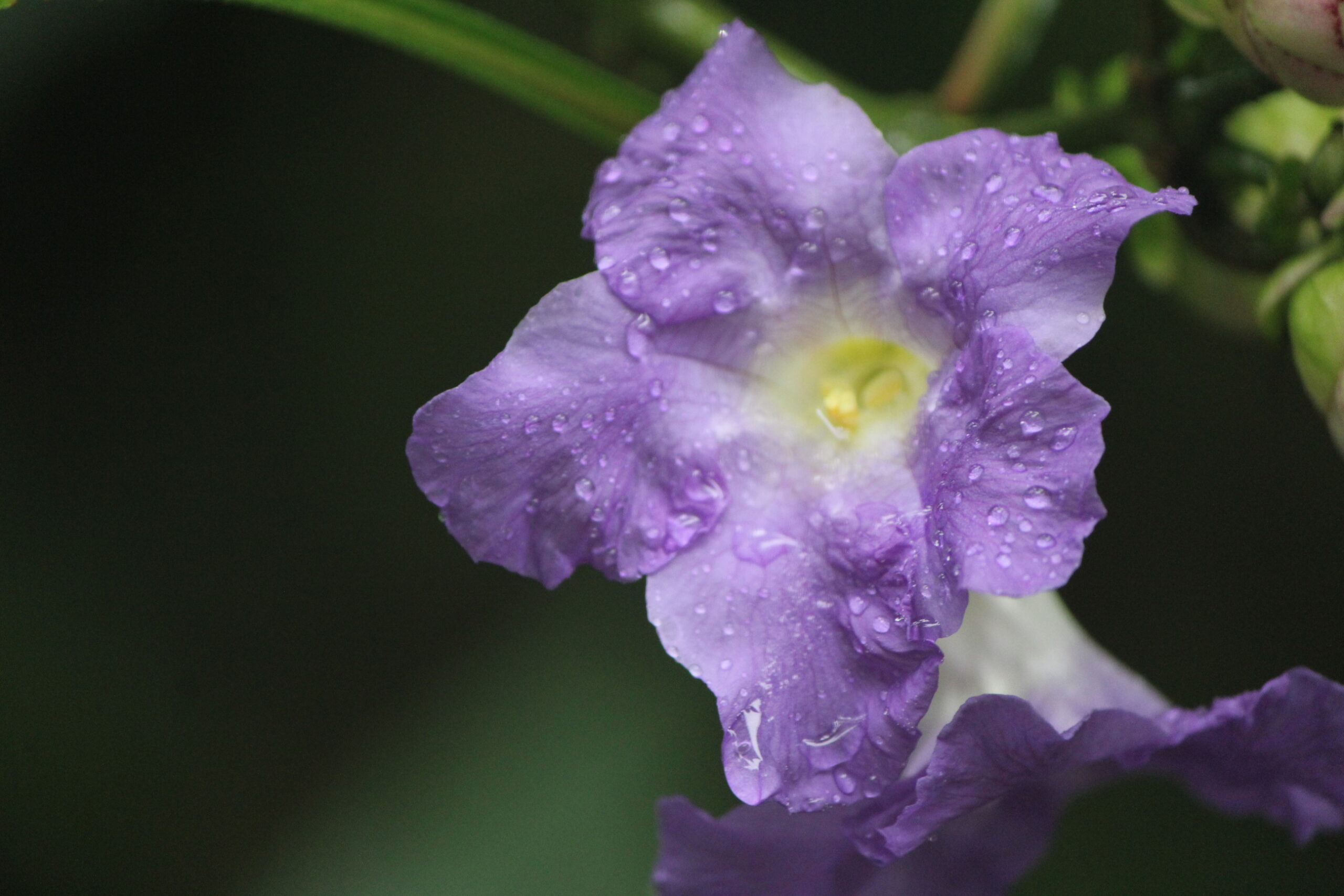
Last Sunday, I was fortunate to experience the magic of the rare and stunning Karvi blossoms in Sanjay Gandhi National Park (SGNP). The vibrant purple-blue carpet had transformed the forest into a floral wonderland. Nature gives an opportunity to see the Karvi in full bloom once every 8 years.
Nature Interpretation Centre (NIC) of SGNP had organised a Karvi Special Walk to Kashimira – one of the forest trails in the core zone of SGNP. A group of 40 nature enthusiasts assembled at the cycle stand at 6:45 am and were transported in a safari bus. The Kashimira trail which is around 5 kms starts near the Lion/Tiger safari enclosure.
In this piece of nature writing, I share with you some of the wildlife observations and learnings on the Kashimira trail under the guidance of the experts. Before I take you on the trail, let me introduce you to some key facts about Karvi.
- It is a wild shrub growing up to 6 m tall in various parts of Mumbai like Aarey Colony, SGNP, Tungareshwar, Yeoor hills (Thane). Basically, Karvi plants grow in large areas in the hilly terrains of the Sahyadri ranges.
- Post monsoon, the plant is nothing but dry and dead looking stems. It only comes alive with the advent of rains. This cycle continues for 7 years.
- In the eighth year, it bursts into bloom and an amazing phenomenon of mass flowering can be witnessed.
- Next year, post flowering, the buds of the Karvi shrubs will dry and the seeds will disperse by making a loud popping sound. Whoever is present at this time can literally hear the ‘pop’ ‘pop’ ‘pop’ sound echoing the forest.
- The tribals of Maharashtra use the leaves and sturdy stems to make thatched roofs and build huts.
- The plants attract a wide species of butterflies, insects and birds. It is a host plant for butterflies like Sahyadri Blue Oakleaf & Chocolate Pansy.

We started the walk on the trail at 7:15 am. The group was split into two batches and a nature educator was assigned for each. Our naturalist Mr. Unmesh, a wildlife biologist, an expert in its subject had a profound knowledge about plants, birds and ecology.
The weather was humid with overcast conditions. The Brown-headed Barbet well hidden in the forest canopy made its presence felt with its loud and ringing ‘kutroo…kutroo…kutroo’ calls. The singing of the barbet is one of my favourite sounds in the forest. I like the way the bird sets its harsh trill in the beginning and continues the repetitive call pattern. Out of the 9 species of Barbet found in India, Coppersmith Barbet & Brown-Headed Barbet are commonly spotted in SGNP. But a recent bird count (Feb 2024) organised by Bombay Natural History Society (BNHS) spotted a White-cheeked Barbet which is endemic to Western Ghats at Jambulmaal (point above Kanheri caves). It is not so easy to find a White-cheeked Barbet in monsoon, says Unmesh, as it easily camouflages between green foliage. Monsoon is the best time to watch the movement of reptiles, insects, butterflies and amphibians. Wild flowers cannot be missed too lined up the trail.
A bird hopping and hiding in the bushes watched our movements as if it was aware of our presence. It was Greater Coucal. The most captivating features of this bird is its bright red eyes. Giving a whooping call ‘coop..coop..coop’, it flew away in the bamboo growth. Locally called as ‘Bharadwaj, it is known for being a snake hunter and enemy of crows as it eats their eggs. Their diet also includes a wide variety of foods, including insects, caterpillars,bird eggs, nestlings, fruits, and seeds. In some places of Maharashtra, it is also known as ‘Na-pita’ (without drinking). Unmesh shares a funny anecdote behind this name. When people drink a lot of alcohol, their eyes become red. But the bird does not drink alcohol at all. But still its eyes are blood-red. Hence the name. Participants share a laugh and continue the walk on the trail.

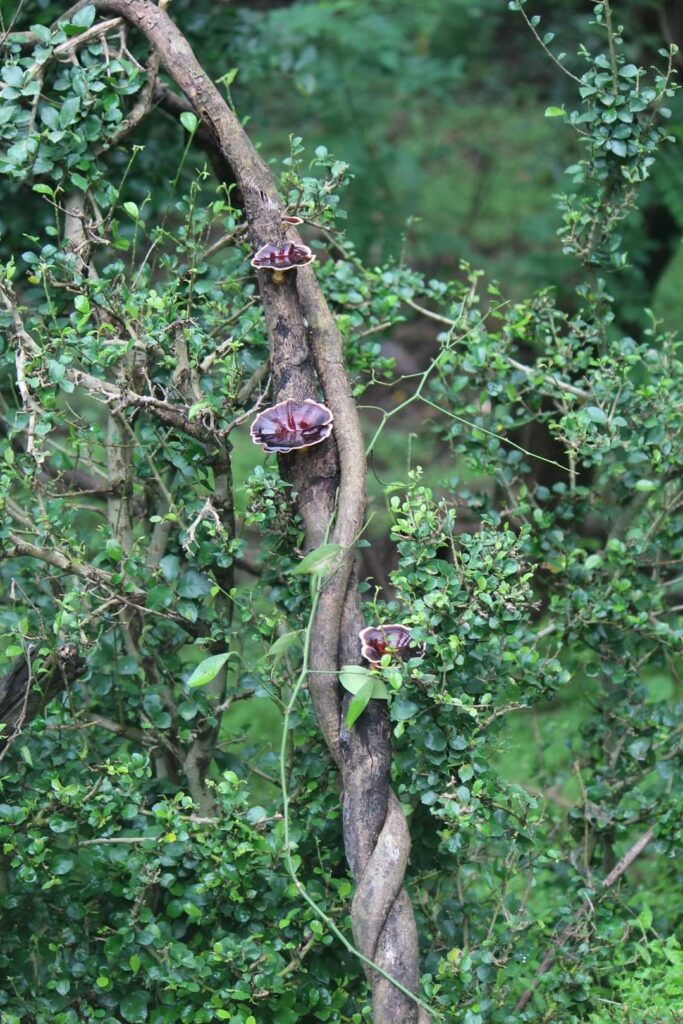
Unmesh gives information about few other birds like Common Iora, Indian Spotbill Duck and Oriental White Eye. As we are actively engaged in listening to him a Common Tailorbird gives out its loud and distinctive call ‘tweet tweet tweet’. And it kept tweeting as if agreeing to what was being told about him. It is a common tiny bird found in Mumbai’s shady city garden and also widespread in SGNP. July to December is their breeding season and the pairs are busy foraging for insect food for their fledglings. The birds stitch their nest in thick foliage by sewing the leaves together with its beak. The nest looks like a cup, filled deep with soft materials. The bird goes easily unnoticed in the city. If you observe you will surely find it in your own backyard busy going about its work.
A yellow coloured Signature Spider was weaving its web close to the ground on a shrubby plant. Its spiral web was dewed with raindrops. Perfectly still, the spider waited at the centre of the web amongst the leaves of the shrubs only a metre or so above the ground so that it could catch the low flying insects. Quite contrary, we noticed the numerous silvery webs spread on the ground. These webs were of Funnel-Web Spider. Like other spiders, their webs are not meant to trap their prey. But they collect any vibrations on the ground caused by the fine silk and give alert of any approaching animal to the spider who sits in the centre of the funnel.
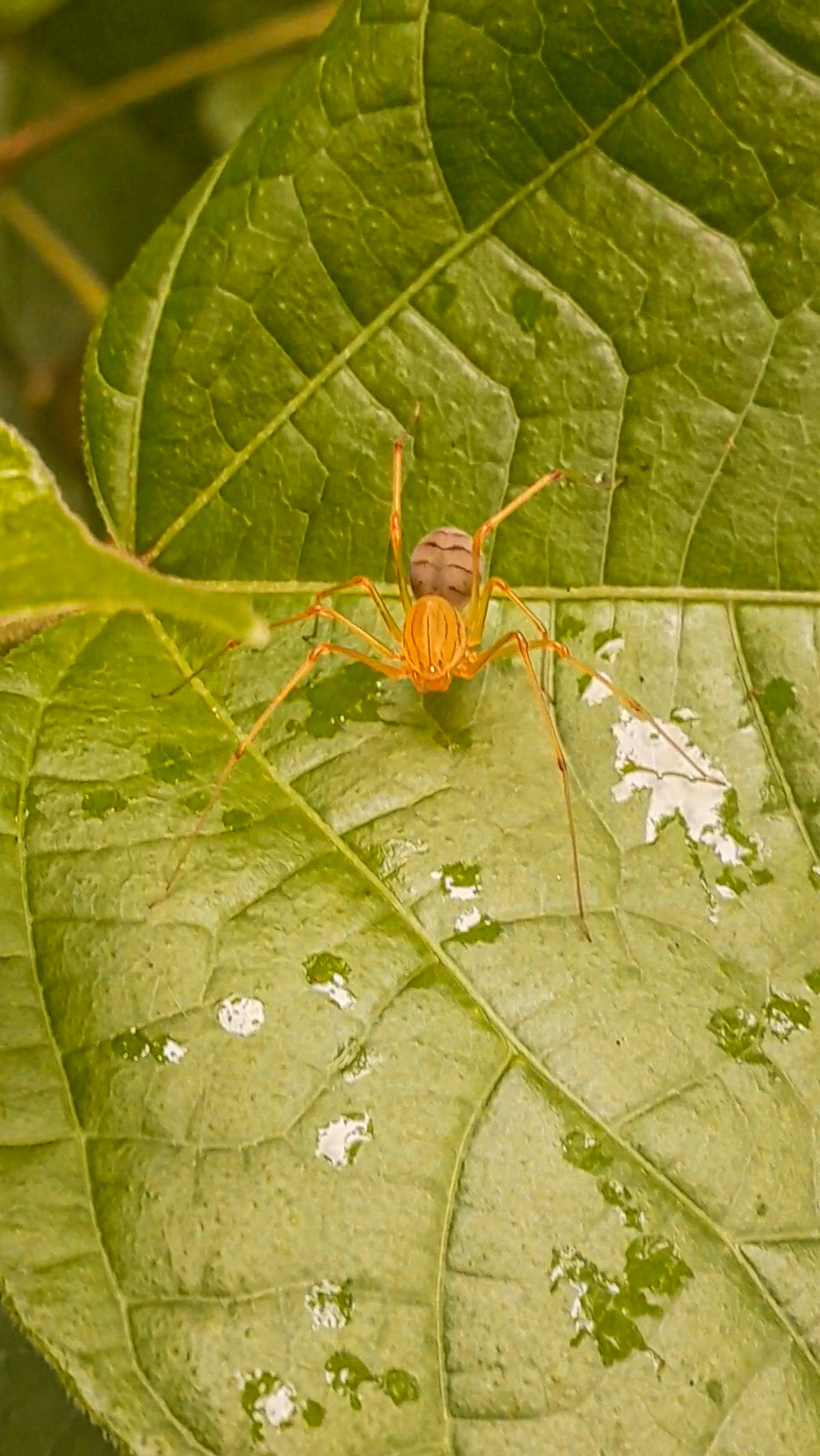

Do you know what animals do when their stomach is undigested? asks Unmesh, as the walk on the trail gains a slight ascent.
They eat bamboo leaves. Leaves are natural medicine for them to cure their stomach ailments. Bamboo shoots, leaves and stems are dietary sources for many animals. The life span of bamboo is around 60-70 years. The forest that has an abundance of bamboo will definitely have tigers, exclaims Unmesh, giving an example of his experiences of Periyar Tiger Reserve in Kerala. Tigers are ambushed predators and easily go unnoticed in the bamboo growth. One of the secrets of bamboo which is not known to many is that it stores water in its stems and hollow culms. During the dry season, you can drink water from a bamboo by cutting a notch in the stem.
Unmesh stops under the tree and questions us wittingly. “For how many days can you party with your friends?” Some said 2 days, some a week and some said it depends on the company. Then he introduces us to the tree that had spikes all over the trunk. This is a Red Silk Cotton tree. For 2 months, March to April, various species of birds party in full swing on this tree. This is the flowering period and the tree blossoms with silky red flowers. More than 60 species of birds were recorded in SGNP drinking nectar from the flowers. The tree has conical spikes to protect its bark from animals which rub against it. There are only 2 mammals which reach the top of the tree for its flowers – Squirrel & Monkey. The monkey enjoys the flowering so much that it eats the entire flower.

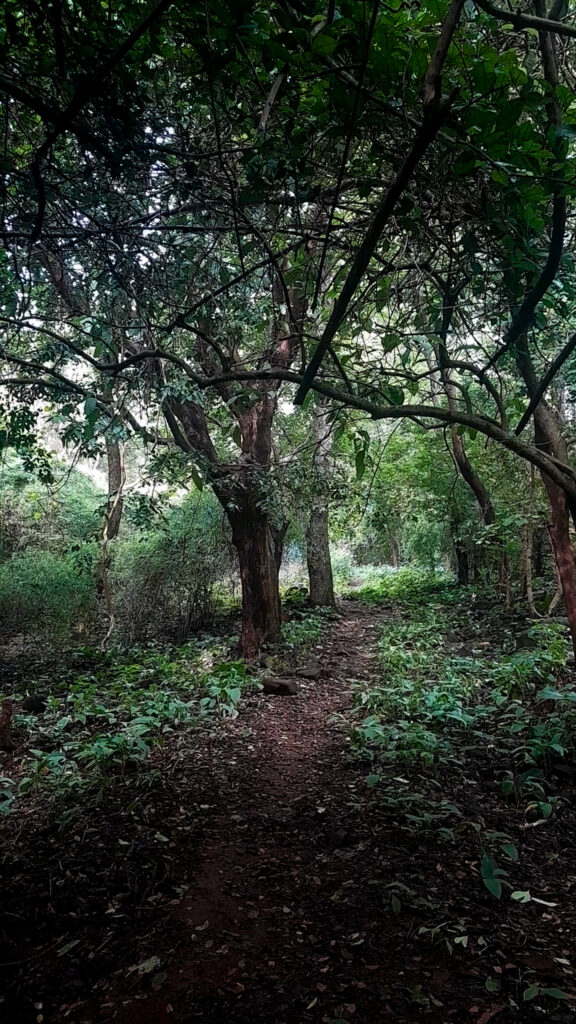
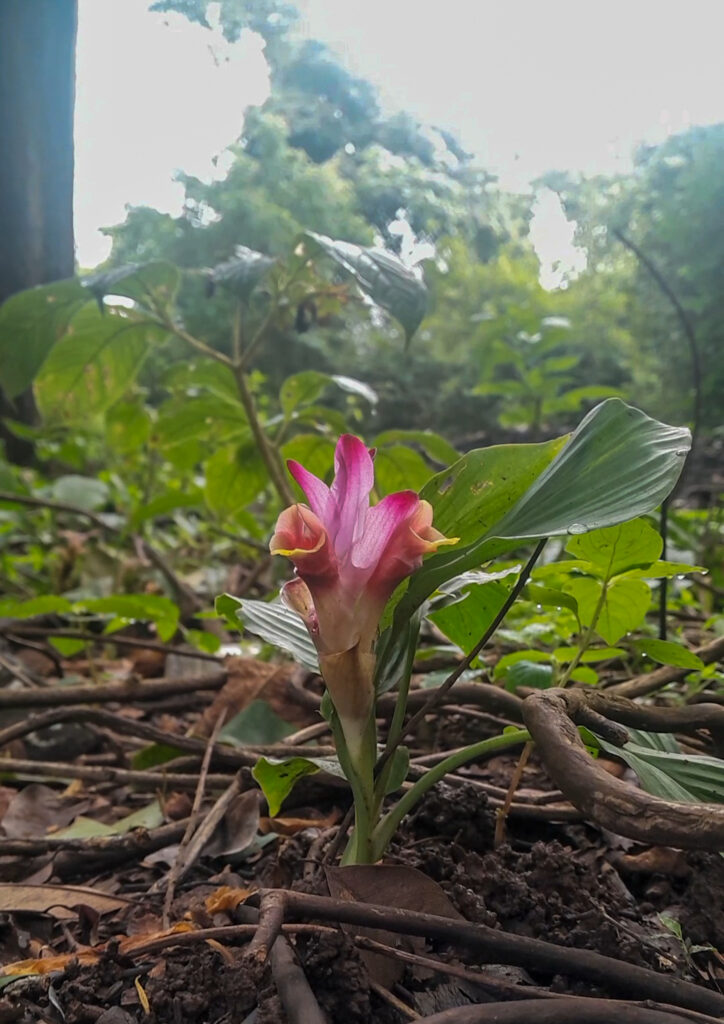
The trail narrowed as we continued the walk. The shaded areas of the wet forest were lined with Hill Turmeric plants (locally called as ‘Ranhaldi’). Its bright yellow flowers looked attractive among the pink-purple bracts. The forest floor looked stunning in hues of purple and pink. The flowering will remain till September. No matter how many times I have seen this flowering before, I always wait around near the ‘Ranhaldi’ for a moment! It is an important wildflower in the Sahyadri range where it is only believed to be found. It has been included in the IUCN Red List.
When on a walk in a forest, if you see a jumble of overlapped dry leaves fixed on a tree, don’t ignore it. Observe it. This is one of nature’s architecture to admire. This is the Pagoda Ant Nest. The ants make the nest with dry leaves, saliva and mud. Rufous woodpecker shares a symbiotic relationship with the ants. The bird lays its eggs in the ant’s nest and when the egg hatches, the mother brings food for the babies. And the wastage left from the food is consumed by the ants. In this way, both benefit from each other. ‘Ek ko khana, ek ko ghar’. (One gets food, the other gets home). Their nests are tough and protect the ants from all kinds of extreme climates.
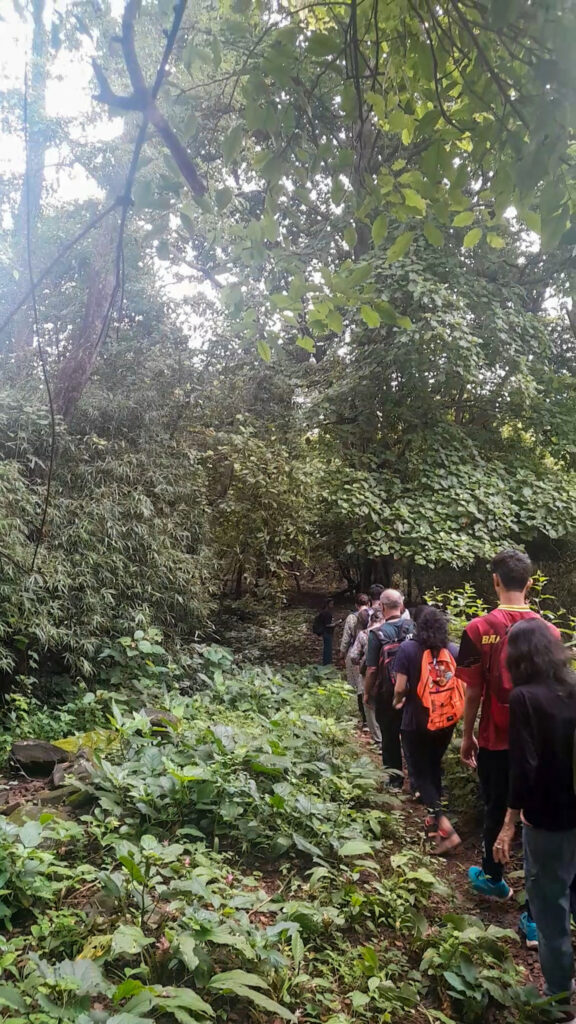
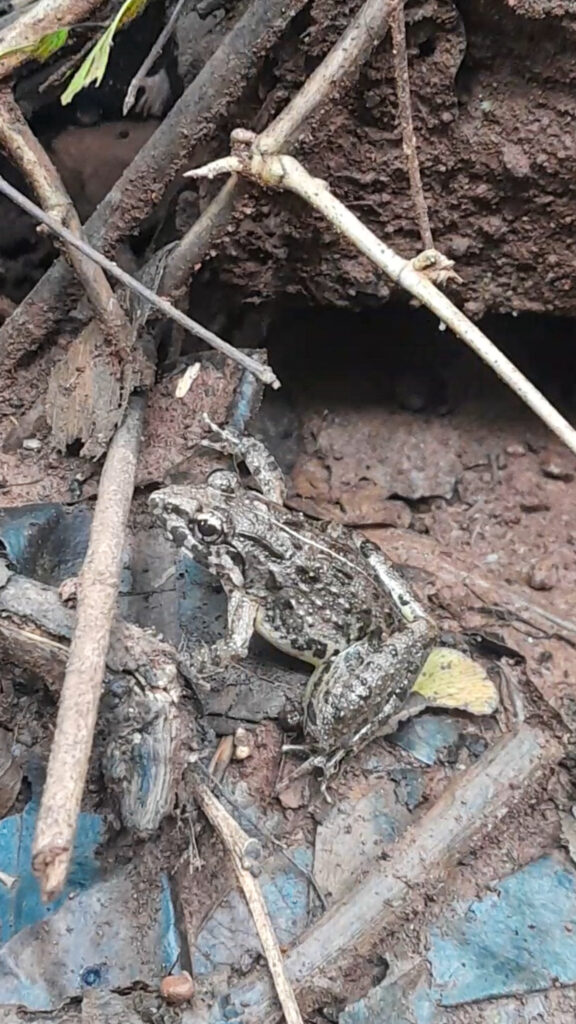
A Hanuman Langur gives a loud whooping call. It is a territory marking call given by the leader of the troop which will not be heard after 11 am. A Tiger Beetle is preying on its insect on a leaf. A Skittering Frog jumps in front of us and sits motionless watching our movements. A Giant Wood Spider is busy weaving and moving around its web unaffected by my presence as I try to capture it through different angles. The male is 20 times smaller than the female. After mating the male becomes its first meal. Hiding in a ditch is a juvenile Bull Frog while others are photographing it with much enthusiasm as they have been told that there is a record of an Adult Bull Frog swallowing a highly venomous snake Russell’s Viper after a long battle. So, photo to banta hai na!
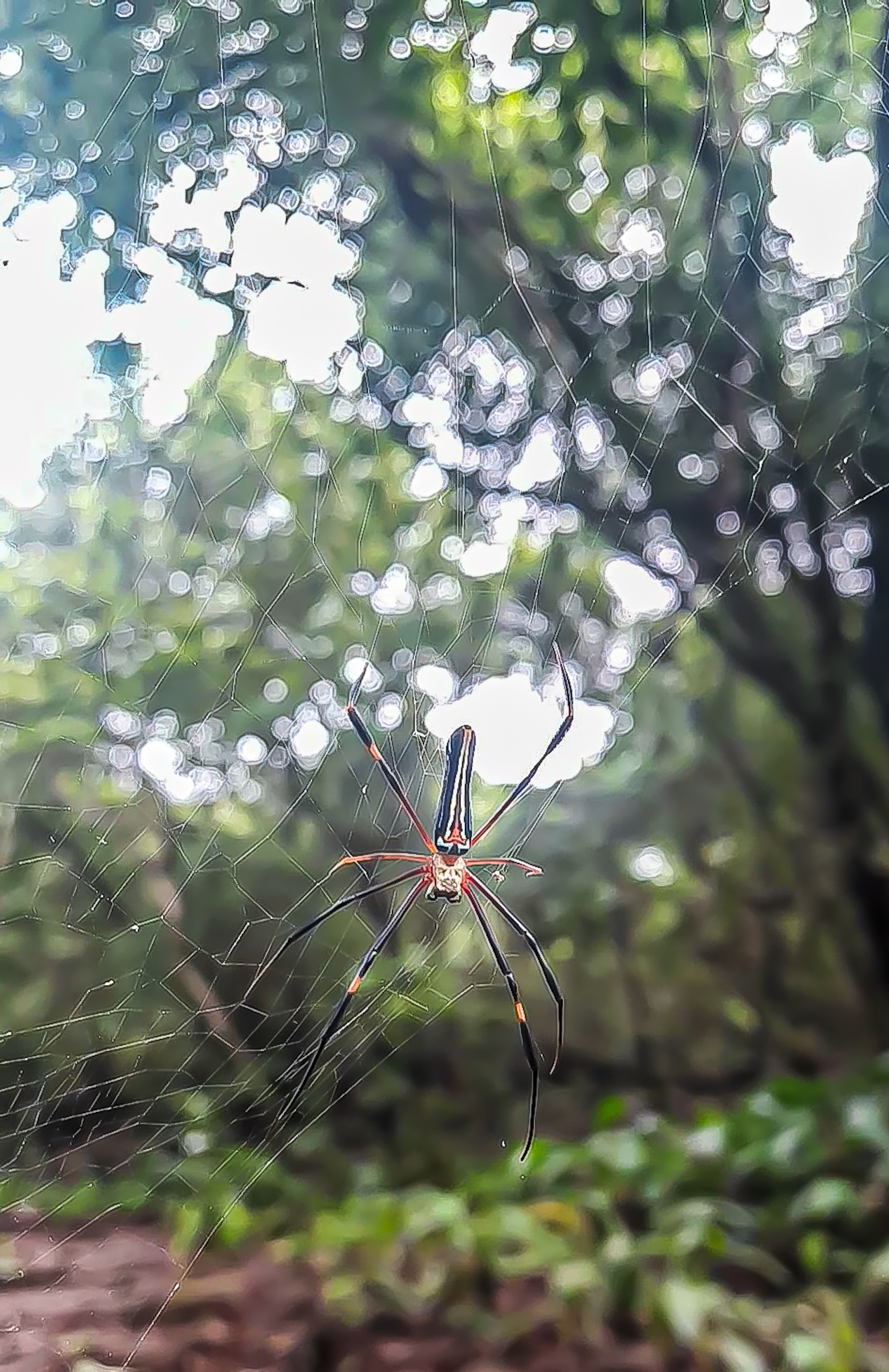
After a 90 minute walk in the forest, at around 9 am, we reached the thick undergrowth where Karvi shrubs had burst into mass flowering. Eight years in making. The moment had finally arrived. Unmesh, guiding the group towards the dense thickets where stems shooted straight up from the ground, pointed to the purple flowers hanging from the dark green stems. “That”, he said, “is the Karvi”. We scattered across the trail to catch the glories of the elusive wild flower.
Its pink and white buds had adorned a bright purple flower. Many buds were yet to open. Droplets danced on the unopened white bud. The bloomed flowers huddled together for warmth. Caterpillars and snails fed on the hairy leaves. A fly fondled the antler of the flower. The insects fed on the Karvy flower in a frenzy. Blister beetles munched on the petals. Honeybees fed and collected nectar. Butterflies hovered above the plants looking for a safe landing.
The flowering will remain for about 15 days adding a burst of colour to the landscape. After that it dies out and the cycle of growth restarts. Post flowering the fruit will pop out and spread the seed on the forest floor. A new life begins as the seeds disperse. Nature is truly miraculous. It was a wonderful sighting. It seemed nature had invited us to witness this beautiful delight. Witnessing the Karvi blossoms filled me with immense happiness.
“All good things are wild and free”.
Henry David Thoreau
Rightly said by Henry David Thoreau. All good things are wild and free. One just needs to set out and explore.
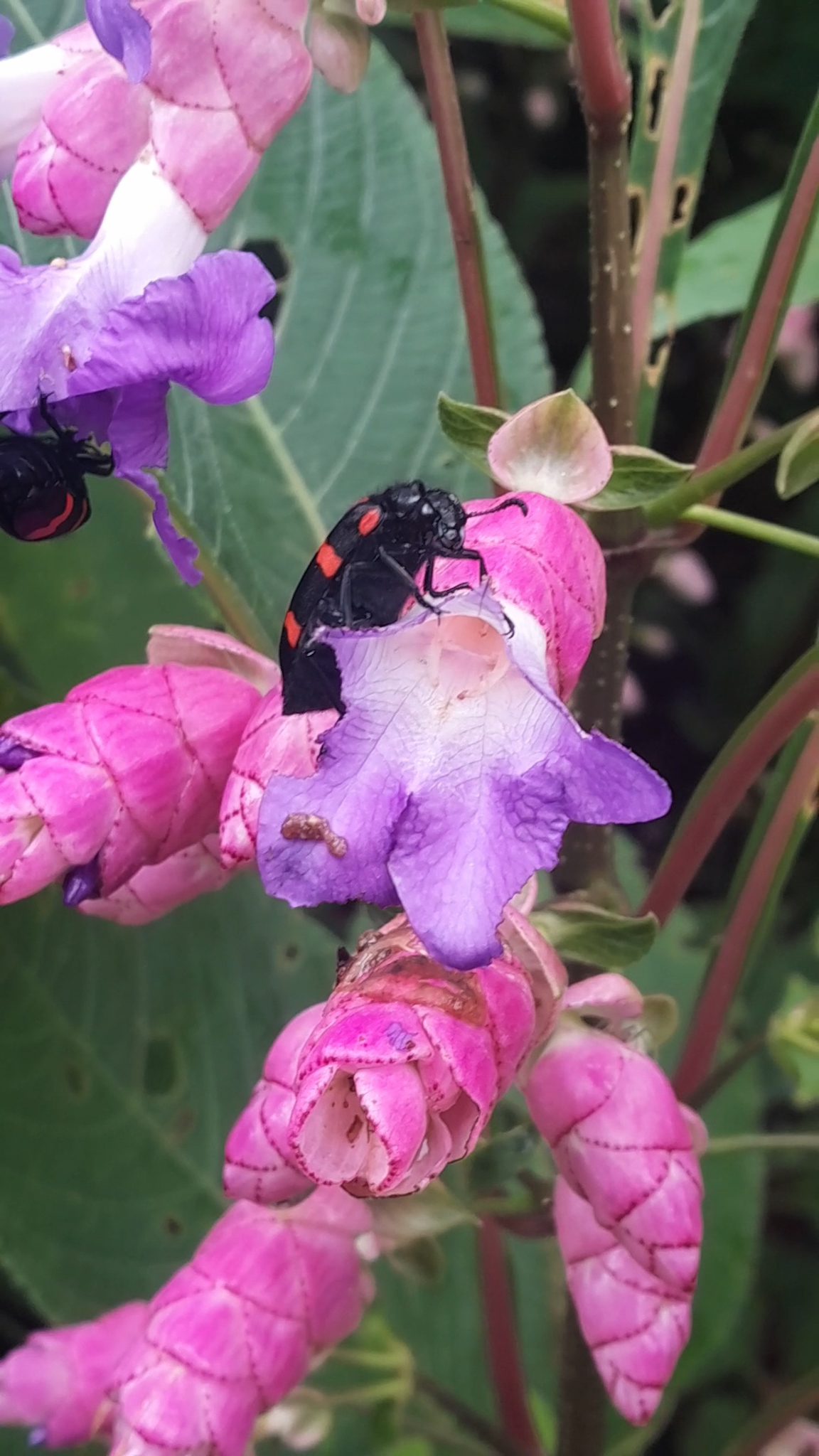

Sitting on the open terrain where the Kashimira trail ended, the view of the high-rises reminded me that was in a forest which is part of a metropolitan city. A forest where life is completely different. Nature has its own laws. I consider myself very fortunate that I am surrounded by the forest of SGNP in the midst of urbanism. The forest has been a nature study book for me. I have learned many things about the natural world which I never knew before.
The trail concluded with a group photograph. And we set out to return, walking in a single line as the trail being narrow where the Karvi bloomed. I kept myself last behind everyone else. Something brushed me. I felt like someone tapped my shoulder. Turning back I saw a Karvi stem swaying in the light breeze. Was it beckoning me to come back or feeling happy that we were going? Whatever, it brought a smile to my face and for the one last time I bowed before nature’s miracle flower. I promised to return back after 8 years.
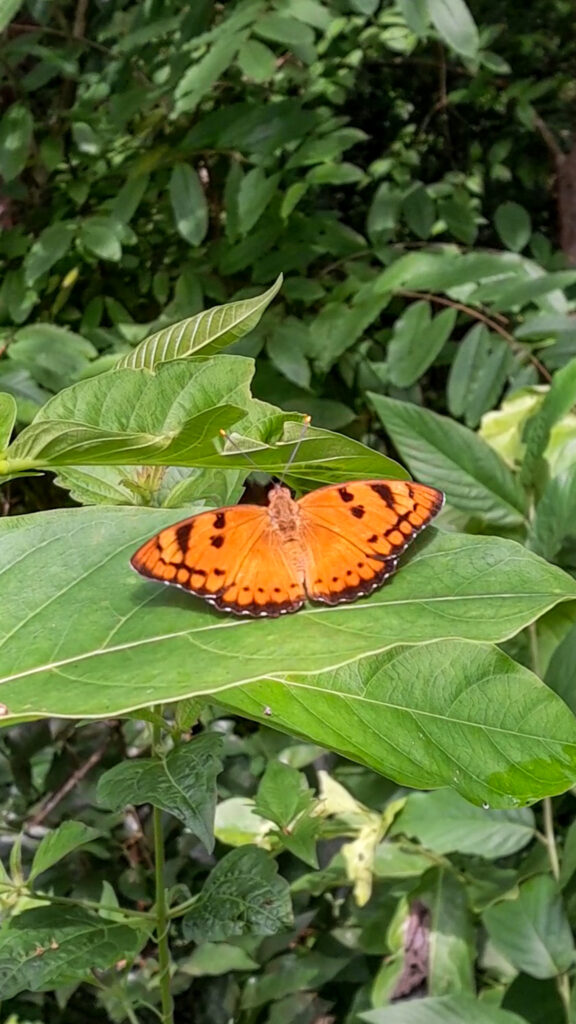






Hi Clement, wonderful write-up. Just a little interjection here, the person leading your trail is Unmesh and not me 🙂 But I hope you had a good time. Looking forward to hosting you for future events.
Thank you Aditya for bringing to our notice 😊
Hi. Is the bloom still there?
No, it isn’t. We will have to wait for 7 years.